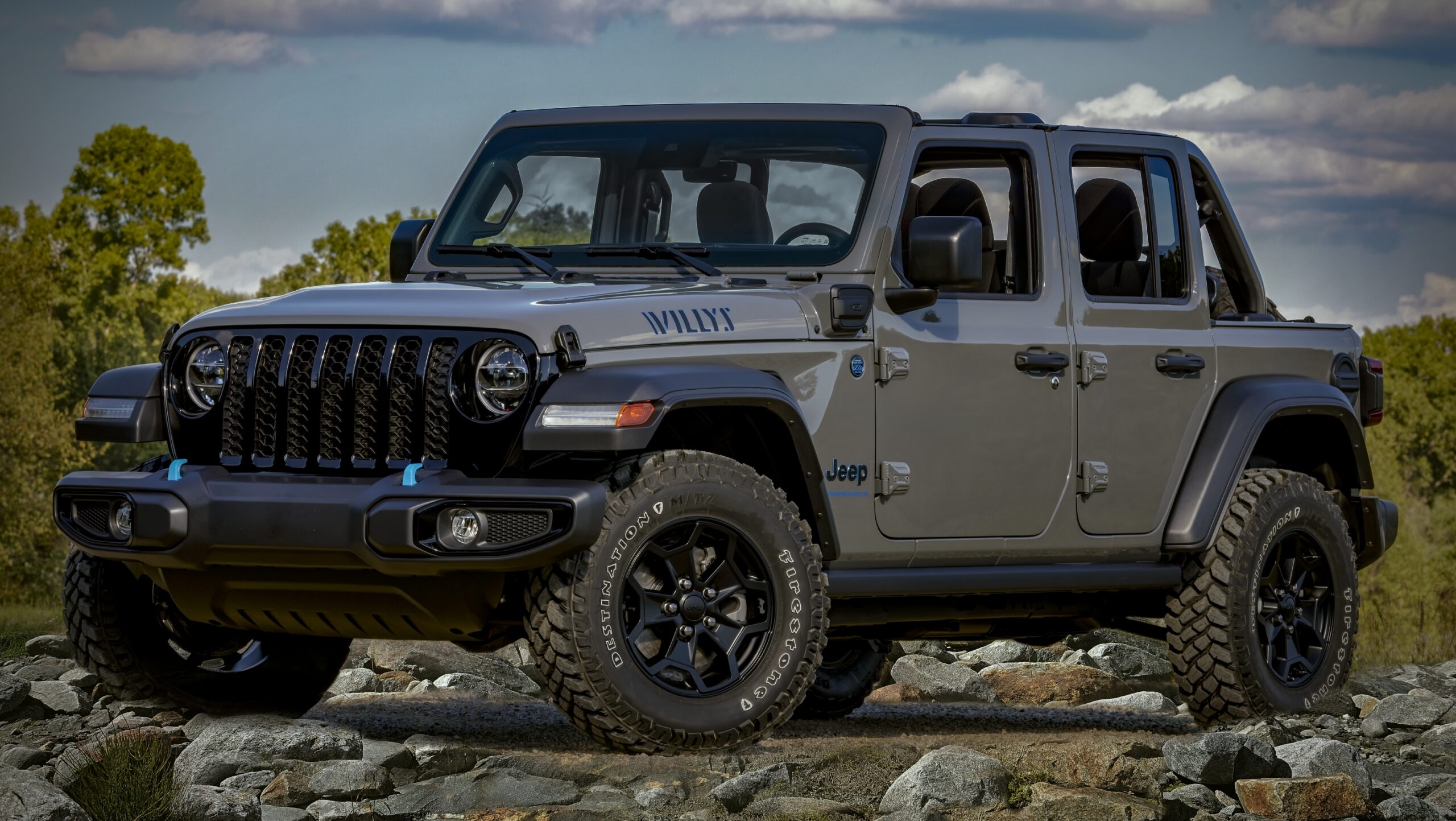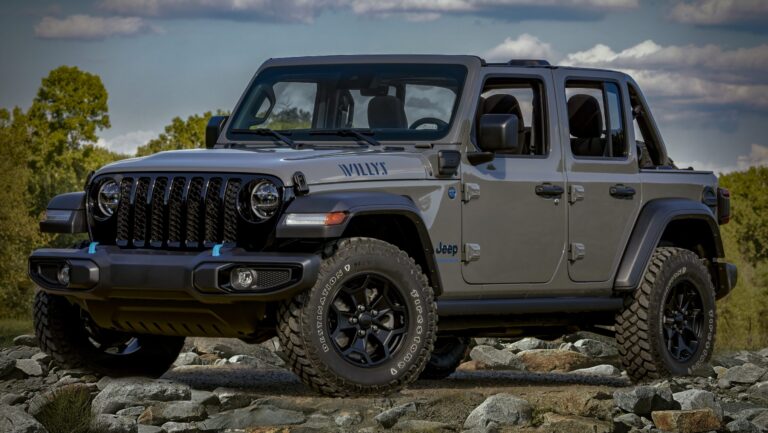Jeep Grand Cherokee 2000 For Sale By Owner: A Comprehensive Buyer’s Guide
Jeep Grand Cherokee 2000 For Sale By Owner: A Comprehensive Buyer’s Guide /jeeps.truckstrend.com
The allure of a classic SUV, combining rugged capability with everyday comfort, often leads prospective buyers down the path of the used car market. Among the most popular and enduring choices is the Jeep Grand Cherokee, particularly the 2000 model year, part of the beloved WJ generation. When seeking a "Jeep Grand Cherokee 2000 For Sale By Owner," you’re not just looking for a vehicle; you’re embarking on a direct negotiation, a deep dive into a vehicle’s history, and potentially securing a fantastic deal. This guide will walk you through everything you need to know, from the benefits and challenges of buying directly from an owner to a detailed inspection checklist and pricing insights, ensuring you make an informed and confident purchase.
Why Consider a 2000 Jeep Grand Cherokee (WJ Generation)?
Jeep Grand Cherokee 2000 For Sale By Owner: A Comprehensive Buyer’s Guide
The 2000 Jeep Grand Cherokee, designated as the WJ generation (1999-2004), represents a significant evolution from its ZJ predecessor, offering a refined ride, improved safety features, and enhanced capability. It’s a sweet spot in Jeep’s history, blending modern conveniences with the brand’s legendary off-road prowess.
- Reliable Powertrains: The WJ is best known for its two engine options: the robust 4.0L inline-six (I6) and the more powerful 4.7L V8. The 4.0L I6 is often lauded for its legendary durability and simplicity, making it a favorite among enthusiasts and mechanics alike. The 4.7L V8 provides ample power for towing and highway cruising.
- Comfortable Ride: Compared to older Jeeps, the WJ offered a more comfortable and car-like ride, thanks to its unibody construction and refined suspension. It’s equally at home on long road trips as it is on rugged trails.
- Capable 4×4 Systems: Depending on the trim, the 2000 Grand Cherokee came with either the Selec-Trac (NP242) or the Quadra-Trac II (NP247) transfer cases. Selec-Trac offers 2WD, 4WD Part-Time, 4WD Full-Time, N, and 4WD Low, providing versatility. Quadra-Trac II offers full-time 4WD with a low range, utilizing a progressive coupling for traction.
- Timeless Design: The WJ’s exterior design has aged gracefully, maintaining a classic Jeep aesthetic that still turns heads. Its interior, while dated by modern standards, is functional and durable.
- Affordability: As a 20-year-old vehicle, the 2000 Grand Cherokee is incredibly affordable, making it an excellent option for those on a budget seeking a capable and versatile SUV.

The "For Sale By Owner" Advantage and Disadvantage
Buying a vehicle "For Sale By Owner" (FSBO) can be a double-edged sword. While it offers unique opportunities, it also comes with distinct challenges. Understanding these will help you navigate the process effectively.
Benefits of FSBO:
- Potentially Lower Price: Without the overhead of a dealership (sales commissions, lot fees, reconditioning costs), private sellers often list their vehicles at lower prices, providing more room for negotiation.
- Direct Communication and History: You get to speak directly with the vehicle’s owner, who can provide invaluable insights into its history, maintenance records, any quirks, and how it was driven and cared for. This transparency is rarely available at a dealership.
- Flexibility in Negotiation: Private sellers are often more flexible on price and terms than dealerships, especially if they are motivated to sell quickly.
- No Pressure Sales Tactics: You won’t face the high-pressure sales tactics often associated with dealerships.
Challenges and Risks of FSBO:
- "As-Is" Sale: Most private sales are "as-is," meaning once you buy it, any problems that arise are your responsibility. There’s no warranty or guarantee from the seller.
- No Dealer Reconditioning: Dealerships typically perform some level of inspection and reconditioning before selling a used car. A private seller may not have done this, meaning you might inherit deferred maintenance.
- Scammers and Misleading Information: Unfortunately, the private market can attract dishonest sellers. It’s crucial to be vigilant about misrepresented information, hidden damage, or title issues.
- Paperwork and Logistics: You are responsible for handling all the paperwork, including the bill of sale, title transfer, and registration. This can be daunting if you’re unfamiliar with the process.
- No Trade-In Option: If you have a vehicle to trade, you’ll need to sell it separately, which adds another layer of complexity.
What to Look For: A Buyer’s Checklist for the 2000 Grand Cherokee
Thorough inspection is paramount when buying a 2000 Grand Cherokee FSBO. Here’s a detailed checklist:
1. Engine & Powertrain:
- 4.0L I6: Listen for any knocking or ticking sounds. Check for oil leaks (especially around the valve cover and oil filter adapter). Inspect the cooling system (radiator, hoses, water pump, fan clutch) for leaks or signs of overheating. Ensure the engine starts easily and idles smoothly.
- 4.7L V8: Listen for exhaust manifold leaks (ticking sound when cold). Check for coolant leaks and signs of overheating. Some 4.7L engines can suffer from cylinder head issues if overheated.
- Transmission: Check fluid level and condition (should be red, not dark or burnt-smelling). During the test drive, ensure smooth shifts without hesitation, slipping, or harshness.
- Transfer Case (NP242/NP247): Test all 4WD modes (2WD, 4WD Full-Time, 4WD Part-Time, 4WD Low, Neutral). Listen for grinding or clunking noises. Ensure the 4WD light illuminates correctly.
2. Suspension & Steering:
- "Death Wobble": This is a common and serious issue on solid-axle Jeeps. It’s a violent, uncontrollable shaking of the front end, typically occurring at highway speeds after hitting a bump. While testing, pay attention to any looseness in the steering. Look for worn tie rod ends, track bar bushings, ball joints, and control arm bushings.
- Shocks and Springs: Check for leaks on shocks. Bounce each corner of the vehicle; it should rebound once or twice.
- Bushings: Inspect all rubber bushings on control arms, sway bars, and leaf springs (if applicable) for cracks or tears.
3. Brakes:
- Check brake fluid level.
- Inspect rotors for deep grooves or warping.
- Listen for squealing or grinding during braking.
- Test the parking brake.
- Check for ABS warning lights.
4. Body & Frame:
- Rust: This is a major concern on older vehicles. Thoroughly inspect rocker panels, floorboards, frame rails, rear wheel wells, and door bottoms. Surface rust is manageable; extensive structural rust is a deal-breaker.
- Accident Damage: Look for mismatched paint, uneven panel gaps, ripples in the body, or fresh undercoating that might hide repairs. Check the car’s history report for accidents.
- Glass: Inspect windshield and windows for cracks or chips.
5. Interior & Electronics:
- HVAC: Test the air conditioning (cold air) and heating (hot air). A common WJ issue is blend door failure, leading to only hot or cold air on one side.
- Power Features: Test all power windows, locks, mirrors, and the sunroof (if equipped).
- Dashboard Lights: Ensure no warning lights (Check Engine, ABS, Airbag) are illuminated.
- Seats & Headliner: Check for rips, stains, or sagging.
- Radio/Speakers: Test the audio system.
6. Tires & Wheels:
- Check tread depth and look for uneven wear, which could indicate alignment or suspension issues.
- Ensure all tires are the same brand and size, especially on 4×4 models.
- Inspect wheels for bends or cracks.
7. Documentation:
- Clear Ensure the seller has a clear title in their name, free of liens. Verify the VIN on the title matches the vehicle.
- Maintenance Records: Ask for service history, repair receipts, and oil change logs. This provides valuable insight into how well the vehicle was maintained.
- Vehicle History Report (CarFax/AutoCheck): Always run one to check for accidents, salvage titles, flood damage, or odometer rollbacks.
The Buying Process: Step-by-Step Guide for FSBO
- Initial Contact & Pre-Screening: Call or message the seller. Ask specific questions about mileage, condition, maintenance history, any known issues, and why they’re selling. This helps weed out unsuitable vehicles.
- First Viewing & Test Drive: Schedule a time during daylight hours. Bring your checklist. Perform a thorough walk-around and interior inspection. Then, take it for a comprehensive test drive on various road types (city, highway, bumps, turns) to assess its performance, listen for noises, and test all features.
- Pre-Purchase Inspection (PPI): This is the single most important step. If you’re serious about the vehicle, arrange for an independent, trusted mechanic (preferably one familiar with Jeeps) to perform a comprehensive PPI. This will uncover issues you might miss and give you leverage for negotiation. Be prepared to pay for this, usually $100-$200.
- Negotiation: Armed with the PPI report and market research, be prepared to negotiate. Be polite but firm. Highlight any defects found by the mechanic to justify a lower offer. Have your maximum price in mind.
- Payment & Paperwork:
- Bill of Sale: Draft a detailed bill of sale including buyer/seller names and addresses, VIN, make, model, year, purchase price, date, and "as-is" clause. Both parties should sign and keep a copy.
- Title Transfer: The seller must sign over the title to you. Verify all information is correct. In some states, a notary may be required.
- Payment: Use a secure method like a cashier’s check or bank transfer. Avoid carrying large amounts of cash.
- Insurance & Registration: Once the sale is complete, get the vehicle insured immediately. Then, take the signed title, bill of sale, and proof of insurance to your local Department of Motor Vehicles (DMV) or equivalent agency to register the vehicle in your name and get new license plates.
Understanding Pricing and Value: Jeep Grand Cherokee 2000 For Sale By Owner
The price of a 2000 Grand Cherokee can vary significantly based on several factors:
- Mileage: Lower mileage typically commands a higher price.
- Condition: Excellent cosmetic and mechanical condition significantly boosts value.
- Trim Level: Limited and Overland trims with more features generally cost more than a base Laredo.
- Engine: The 4.7L V8 might command a slightly higher price than the 4.0L I6 due to more power, but the 4.0L’s reputation for reliability can also make it desirable.
- 2WD vs. 4WD: 4WD models are generally more valuable due to their versatility.
- Maintenance History: A well-documented service history adds considerable value.
- Geographic Location: Prices can fluctuate regionally.
Here’s an estimated price table for a 2000 Jeep Grand Cherokee For Sale By Owner:
| Condition | Mileage Range | Estimated Price Range | Notes |
|---|---|---|---|
| Poor | 200,000+ | $1,500 – $3,000 | Significant mechanical/cosmetic issues. Needs major work. |
| Fair | 150,000-200,000 | $3,000 – $5,000 | Runs and drives, but has noticeable flaws and deferred maintenance. |
| Good | 100,000-150,000 | $5,000 – $7,500 | Solid daily driver, well-maintained with minor wear and tear. |
| Excellent | Under 100,000 | $7,500 – $12,000+ | Exceptionally well-preserved, low mileage, meticulously maintained. Rare find. |
Note: These are estimates. Always cross-reference with local market data from sites like Kelley Blue Book (KBB.com), NADAguides, or recent classifieds.
Common Challenges & Solutions for the 2000 Grand Cherokee Owner
Even a well-maintained 2000 Grand Cherokee can present specific issues over time. Being aware of these can help you manage expectations and budget for future repairs.
- "Death Wobble":
- Challenge: Violent shaking of the front end, typically at highway speeds.
- Solution: Usually caused by worn front suspension components (track bar, tie rod ends, ball joints, control arm bushings) or poor alignment. Regular inspection and replacement of worn parts are key.
- HVAC Blend Door Issues:
- Challenge: Air conditioning or heating only working on one side, or not at all.
- Solution: The plastic blend doors inside the HVAC box can break. Repair kits are available, but replacing them can be labor-intensive, often requiring dashboard removal.
- Rust:
- Challenge: Rust on rocker panels, wheel wells, and frame.
- Solution: Inspect thoroughly before buying. For existing rust, prompt treatment (grinding, rust converter, painting) can slow its spread. Prevention (washing off salt, rustproofing) is best.
- Electrical Gremlins:
- Challenge: Issues with power windows, door locks, radio, or sensor failures.
- Solution: Many electrical issues can be traced to faulty grounds, corroded wiring, or specific sensor failures (e.g., crank position sensor). Consult forums and wiring diagrams.
- Cooling System Vulnerabilities (4.0L):
- Challenge: The 4.0L can run hot, leading to issues with the fan clutch, water pump, or radiator.
- Solution: Regular coolant flushes, ensuring the fan clutch is operating correctly, and replacing components as they age are crucial for longevity.
Frequently Asked Questions (FAQ)
Q1: Is the 2000 Jeep Grand Cherokee reliable?
A1: Generally, yes, especially models with the 4.0L I6 engine. They are known for their durability if properly maintained. Like any 20-year-old vehicle, specific components will wear out, but major mechanical failures are less common than with some other vehicles of its age.
Q2: Which engine is better, the 4.0L I6 or the 4.7L V8?
A2: It depends on your priorities. The 4.0L I6 is renowned for its extreme reliability, simplicity, and ease of maintenance. The 4.7L V8 offers more power for towing and acceleration but can be slightly less durable if not meticulously maintained (e.g., issues with cylinder heads if overheated). For most, the 4.0L is the more robust long-term choice.
Q3: What’s "Death Wobble" and how do I fix it?
A3: "Death Wobble" is a severe, uncontrollable oscillation of the front wheels, typically occurring after hitting a bump at highway speeds. It’s not unique to Jeeps. It’s usually caused by worn steering or suspension components like the track bar, tie rod ends, ball joints, or control arm bushings. Fixing it involves diagnosing and replacing the worn components.
Q4: How much should I pay for a 2000 Grand Cherokee?
A4: Prices vary widely based on condition, mileage, engine, and trim. You can expect to pay anywhere from $1,500 for a project vehicle to over $10,000 for a pristine, low-mileage example. Refer to the pricing table above and always check current market values.
Q5: What paperwork do I need for an FSBO purchase?
A5: You’ll primarily need a signed Bill of Sale and the vehicle’s clear title, properly signed over by the seller. Depending on your state, you might also need a smog certificate or other documents for registration.
Q6: Can I take a 2000 Grand Cherokee off-road?
A6: Absolutely! The Grand Cherokee (WJ) is a very capable off-road vehicle, especially with the Quadra-Trac II or Selec-Trac 4WD systems. It benefits from a solid front axle and decent ground clearance, making it suitable for moderate trails and overlanding.
Conclusion
Buying a "Jeep Grand Cherokee 2000 For Sale By Owner" can be a highly rewarding experience, offering the potential for a great deal and direct insight into the vehicle’s past. However, it demands due diligence, thorough inspection, and a clear understanding of the process. By leveraging the information in this guide – from understanding the WJ’s strengths to a meticulous inspection checklist, savvy negotiation, and careful handling of paperwork – you can confidently navigate the private sale market. A well-chosen and well-maintained 2000 Grand Cherokee can serve as a reliable, versatile, and enjoyable vehicle for many years to come, embodying the true spirit of Jeep.


